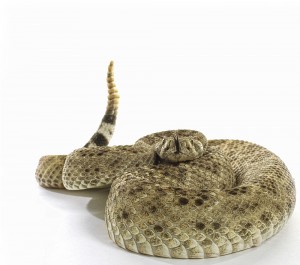Treat a Snakebite
While all outdoorsmen take safety measures to ensure that they do not get lost in the woods and avoid bears, far less people provide the proper safety precautions to avoid and treat snakebites. However, a bite from a  poisonous snake can be far more deadly than a night lost in the woods or a timid black bear. If you or someone in your party is bitten by a poisonous snake, you will only have moments to act before the poison enters the blood stream, so it is crucial that you have the proper tools and skills to treat the bite effectively.
poisonous snake can be far more deadly than a night lost in the woods or a timid black bear. If you or someone in your party is bitten by a poisonous snake, you will only have moments to act before the poison enters the blood stream, so it is crucial that you have the proper tools and skills to treat the bite effectively.
It is important to understand that some snakebites are more deadly than others. The most common poisonous snakebites by far are from copperheads. Thankfully, their venom is significantly less poisonous than other dangerous snakes, but a copperhead snakebite is still toxic enough to cause nasty consequences, particularly if you are too deep within the backcountry to call for help. A rattlesnake bite, on the other hand, delivers a venom that begins destroying tissue the moment it hits the body. If the venom makes it into the bloodstream and is not treated, it will rapidly degenerate the body’s organs and lead to particularly painful death. Even if the bite is treated immediately, a rattlesnake bite will still leave an impressive scar.
There is a great deal of misinformation out there about sucking out the venom of a snake bite or cutting the swollen area of the infection. Do not under any circumstances try to suck out the venom. In a best case scenario, you will be wasting valuable time, while you could make yourself sick if you actually manage to get any of the toxin into your mouth. Ignore the folk wisdom about cutting the area of the bite as it begins to swell, as this will do nothing more than make matters worse. Also, leave those snakebite kits alone on the store shelves; they are absolutely ineffective.
Regardless of the species of snake, the most important step to treating a snakebite is to act fast. As soon as you are clear of the snake, have the victim lie down on the earth with the bite exposed to the open air. If you are anywhere near civilization, send someone to call for help while you start administering first aid. Situate the victim’s body so that the bitten limb is below the heart; if you elevate the bitten area, the venom will spread much more quickly. All poisonous snakebites will result in the swelling of the bitten area, so the next step is to remove any and all restrictive clothing and jewelry before they become stuck and cut off circulation.
Next, wash off the area of the bite with water and have the victim drink as much water as possible. Once the bite is clean, begin wrapping the limb fairly tightly with an Ace bandage or spare clothing. Be careful not to cut off circulation by checking for a pulse below the bandage. Finally, attach a splint to the limb to keep it immobile. As you wait for medical assistance, try to keep the patient calm and hydrated. Remember, less than 10 people die from snakebites in the United States, but a bite can lead to amputation if you don’t get to a doctor on time. If you are deep within the backcountry, you and the victim are going to have to start making your way back to civilization.
Snakebites can be avoided all together if you are familiar with the poisonous snakes in your area. While some regions contain more species of poisonous snakes than others, it is rare that there are more than a handful of poisonous snake species in any given area. If you are familiar with the types of poisonous snakes in your habitat and are familiar with their habits, it becomes quite easy to steer clear of poisonous snakes all together. For example, in the southeastern region of the United States, the only common poisonous snakes are cottonmouths, timber rattlesnakes and northern copperheads. Rattlesnakes will alert intruders of their presence and are easy to avoid. Cottonmouths are mostly aquatic and are rarely encountered unless hiking through wetlands. Copperheads, however, are quite common and can inhabit any area with a great deal of underbrush where there camouflage makes them very difficult to spot. They can be avoided by sticking to the path and not trying to clear through dense brush unless absolutely necessary.
